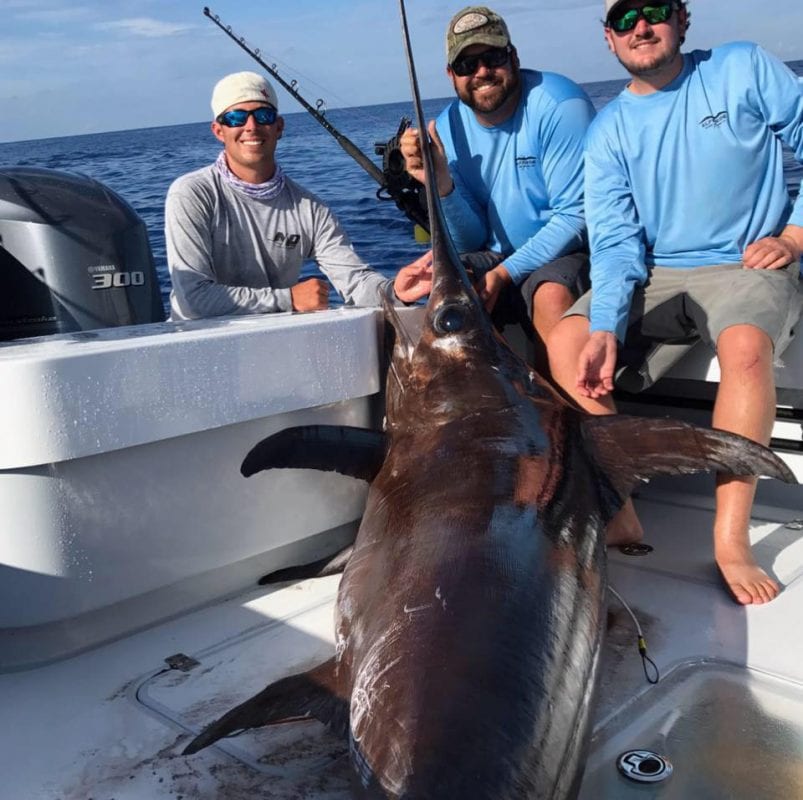
By Captain Chase Cornell
Social media is a powerful platform. In today’s world, just about anything you need to know (or not know) is literally in the palm of your hand. I will never forget when I read an article on Facebook some years back that the Bahamian government was entertaining the idea of allowing purse seining for yellowfin tuna in Bahamian waters. I was so shocked that an indiscriminate and unsustainable form of fishing could potentially be brought into a fishery I loved so dearly, that I opened up a Facebook group labeled, “Stop Purse Seining of Yellowfin Tuna in Bahamian Waters.”
Within days, my Facebook group grew to over 3,000 members. I made connections all over Florida and the Bahamas. Even the guys that were trying to start the netting operation were in my Facebook group, commenting and patrolling the forum. As public backlash to the news spread throughout the region, the Bahamian parliament held a public meeting and the movement to purse seine tuna was ceased.
I was proud to have been a part of preserving the tuna fishery in the Bahamas. But, the fight for recreational fishing rights is far from over. It is amazing that even today; the great nations of this world still allow or even entertain unsustainable fishing practices. Just recently, our own governing body, the National Oceanic and Atmospheric Administration (NOAA) passed an exempted longline permit for Day Boat Seafood to commercially longline for swordfish in a previously closed zone off the coast of Florida. This decision has opened the door to what could potentially lead to extremely negative impacts on our offshore ecosystem.
When you dig into how this permit came to exist, there are a myriad of factors. One of those factors precipitates from the management of Highly Migratory Species on an international level. Swordfish are managed by an organization called ICCAT (International Commission for the Conservation of Atlantic Tuna). ICAAT sets annual catch quotas per country based on their participation in a specific fishery. To look at some approximate numbers, the total North Atlantic quota (Atlantic Ocean north of the equator) in 2014 was 13,700 metric tons. The United States was allotted 2,640 metric tons of that quota, or approximately 19%.
As a country, we only caught approximately 30% of our portion of the North Atlantic quota and have only been catching a fraction of our allotment of the quota for years. Although this would seem like a nicely implemented conservation strategy, other countries are pressuring ICCAT for a portion of our piece of the quota. Either we catch it, or someone else will. The pressure on ICCAT to divide out portions of our share in the quota then filters down to NOAA, who ultimately granted the exempted permit to Day Boat Seafood for longlining in the previously closed area.
The exempted permit will allow for six longline boats to make 720 sets of up to 600 hooks per boat. That equates to 3,600 hooks per night. Six additional boats will be on the ready should one of the boats fishing have problems. As recreational anglers we should be extremely disappointed with NOAA that this type of immense pressure is being reintroduced into waters so close to home. By 1999, the swordfish population in North Atlantic waters of the United States was so heavily fished by the longline fleet, the government had no choice but to implement extreme regulations and limited access permits to the swordfish fleet.
Ironically, Day Boat Seafood, the same company that applied for and was granted the longline exemption, was one of the first fleets to develop buoy fishing and even admitted that longline fishing was not sustainable to our fisheries. Buoy fishing involves individual hooks secured to a buoy. A commercial fisherman may set out 30 or more buoys (30 or more hooks) and continually run his buoy spread, checking each buoy routinely throughout the night. This technique reduces incidental catches and when one does occur, the by-catch has not been on the hook for hours like it would be on a longline and has a much stronger chance of survival.
Swordfish have become an immensely popular target for recreational anglers all over the country. A strong and healthy swordfish population gives the everyday recreational angler the opportunity to tangle with the true gladiator of the ocean. As recreational anglers, we have to stand up for the right to our fish. We cannot allow our country to fall back on archaic practices or feel pressured by other countries to give up the rights to our fish.
Report your landings to NOAA, let them know we are catching swordfish every week from Texas to Key West, from Fort Pierce to Canaveral, through the Carolinas and up in the canyons of the North East. Let the landings be known, educate yourself on our what is going on in our fisheries and get involved. Future generations deserve the chance to experience what we so quickly take for granted.
Get more information on the longline opening here: https://youtu.be/Yf3PbmlfOew.
Chase lives in Vero Beach and loves to fish and write about his adventures. Read more of his fishing escapades at bitepress.wordpress.com.




